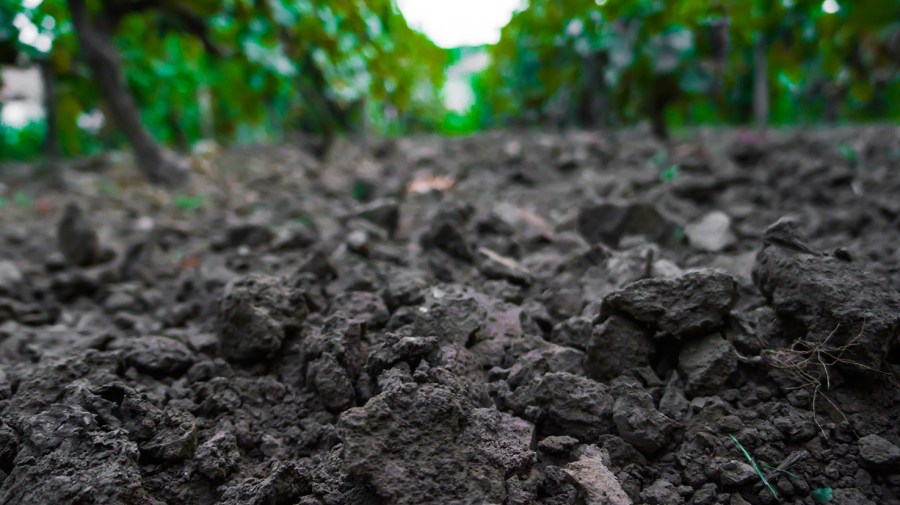Healthy soil and balanced nutrition underpin the success of any vineyard. Hutchinsons Rob Saunders and Chris Cooper explain the benefits of precision soil testing before the season begins.
Whether your vineyard is large or small, old or new, managing the soil well is central to maximising grape yields, quality and flavour characteristics.
An accurate soil test provides a really useful way of evaluating what’s going on beneath the surface, and allows issues, such as poor drainage, sub-optimal pH or nutrient deficiencies, to be identified early. It also gives a benchmark against which the effectiveness of future management practices can be measured.
January and February are an ideal time to conduct soil testing, as there is usually good moisture and time for remedial work and/or tailoring of fertiliser recommendations before the growing season begins or new vines are planted.
However, while pre-planting soil testing (at depths of 0-15cm and 15-30cm) remains fairly common practice for ensuring new vines go into decent conditions, regular soil testing on more established sites can sometimes get overlooked.
Times are changing though. Public and political focus on soil health, carbon, and environmental sustainability is increasing across all sectors. There is a definite need to ensure inputs are used as efficiently as possible with the sharp rise in fertiliser prices in 2021 giving added impetus. Indeed, carbon, data and precision were recurrent themes at this year’s “virtual” Oxford Farming Conference.
Precision mapping solution
Traditional soil core analysis remains a useful tool for assessing basic soil properties, but high definition sampling systems such as Terramap, now offer a highly accurate means of measuring up to 27 different soil properties, at a cost that is competitive with conventional sampling methods.
Standard properties such as Phosphorus (P), Potassium (K), Magnesium (Mg), pH and texture, through to more advanced measurements of Cation Exchange Capacity (CEC), Plant Available Water and organic/active carbon, can all be accurately mapped using Terramap’s 800 sampling points per hectare. Furthermore, GPS technology allows repeat measurements to be taken from precisely the same spot to monitor changes over time.
DEFRA’s Farming Rules for Water in 2018, require English vineyard managers to test soils for P, K, Mg, pH and nitrogen levels at least once every five years, so rather than seeing this as a “tick-box” exercise, use it as an opportunity to thoroughly evaluate soils and get the most from your site.
There can be many benefits for the vineyard, not least because healthy vines are generally less prone to disease. The K:Mg:Ca ratio is a good example; if this ratio is out of sync, it can predispose some cultivars to bunch stem necrosis, so generally indices for all three nutrients should be 3 or above. The widely-grown SO4 rootstock can be particularly prone to issues with Mg uptake.
Phosphate is critical to root development, magnesium is also key to chlorophyll synthesis within leaves, while potassium is needed in relatively high quantities through the season to enable sugars to move from leaves to fruits, with large amounts removed at harvest – typically 3kg per tonne of grapes.
Micronutrient deficiencies will also threaten vine health and grape quality, but are often relatively straightforward to rectify with in-season nutrient applications, providing problems are identified early, rather than waiting until symptoms are visible.
Measuring the soil’s inherent CEC provides further information to help tailor nutritional programmes through the season. Soils with a low CEC (typically <15 meq/100g) have less ability to retain nutrients and are likely to benefit more from a “little and often” approach to fertiliser applications via the leaf or roots than high CEC soils with better nutrient retention.
Longer-term, low CEC soils may benefit from the addition of organic mulches to increase nutrient-holding capacity.
With the increasing focus on carbon, it is worth noting that growers attempting to control weeds through cultivations rather than herbicides, may well be running at lower levels of soil carbon given that tillage speeds up the degradation of organic matter. Again, mulches may be a useful addition, but understanding what’s going on with accurate testing will undoubtedly help formulate the best way forward.
Finally, we discussed late last year the value of critically appraising vines. If there are areas of the vineyard that regularly underperform, produce weak growth, or often succumb to disease, then serious questions need to be asked and digital soil analysis mapping may be one way of doing this. While it will not give all the answers, it may well identify underlying causes.




